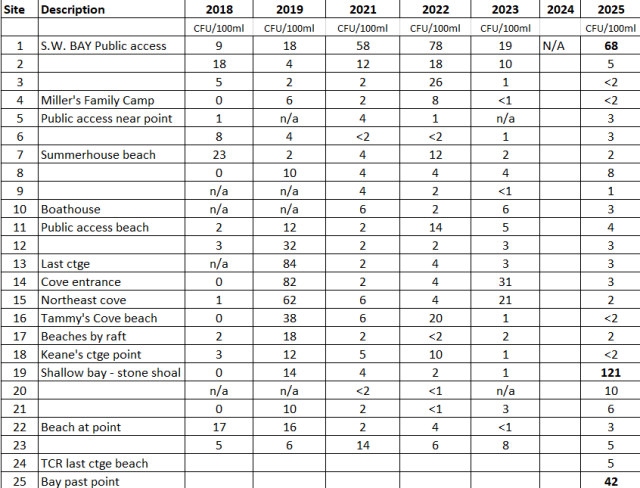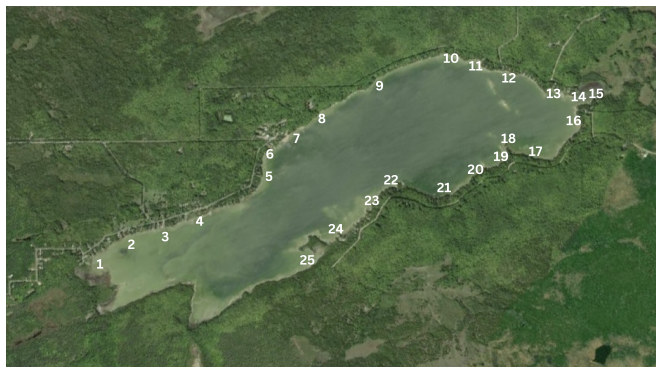Early in the year, volunteers from the Water Level Subcommittee finished repairs on the pre-existing dam. Built in the 1980's, this small structure of sandbags slows the pace of outflow at the southwest end of the lake. Due to the dam repairs, the overall water level dropped more slowly this year, especially considering the heat and lack of precipitation this summer.
Generally, the E.coli levels - with a couple of exceptions - remained low this year in spite of the heat. Perhaps the larger volume of water for a longer period of time helped with that.
Our new Water Stewards, Doug and Pat Jackson, tackled the sampling on Sept. 6, and ALS Laboratories in Kitchener handled the analysis. Doug and Pat gathered 25 samples, and you can check the results on the updated map below.
If you have a consistently high E.coli reading at your property, this may indicate a problem with your or a neighbour's septic field. That's why we do these tests.
'Results' indicate parts per 100mL. Health Canada's guideline for issuing a swimming advisory is over 200 E.coli/100mL. The Ontario guideline used to be more stringent - 100 E.coli/100 mL - but that was changed in 2018 to match the Federal guideline. There is a dispute about the safety of the current level, and the City of Toronto has stuck to the former Provincial guideline and closes beaches at 100 E.coli/100 mL.
Disclaimer: These samples indicate one point in time and do not guarantee safety, since water-fowl can contaminate water at any time.
To check the 2025 E.coli levels at your property, find your location on the map below and refer to the chart provided. The chart also lists previous readings in your area.


We continue to monitor E.coli levels in order to locate septic or run-off problems.